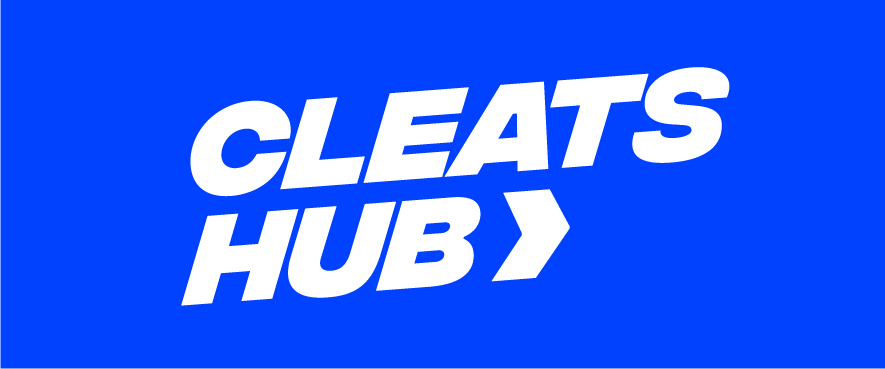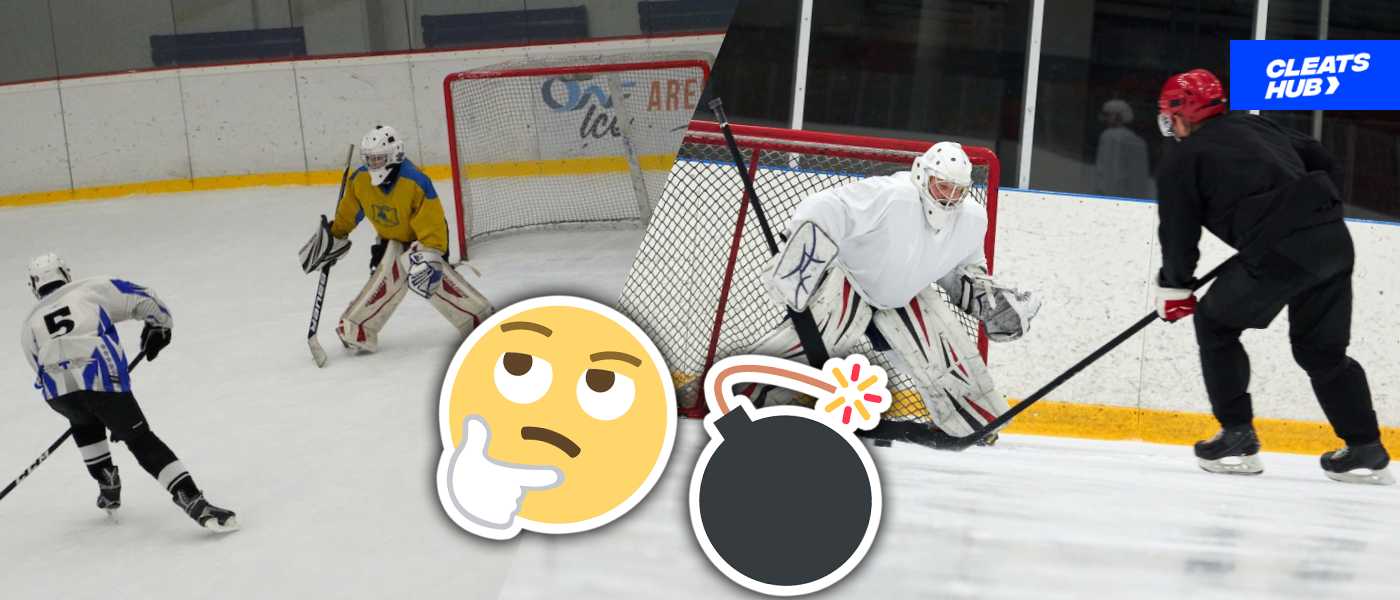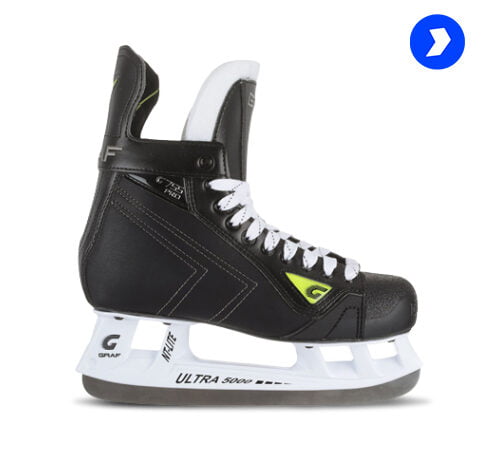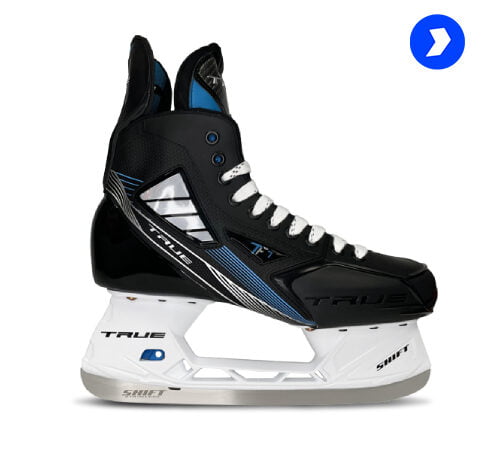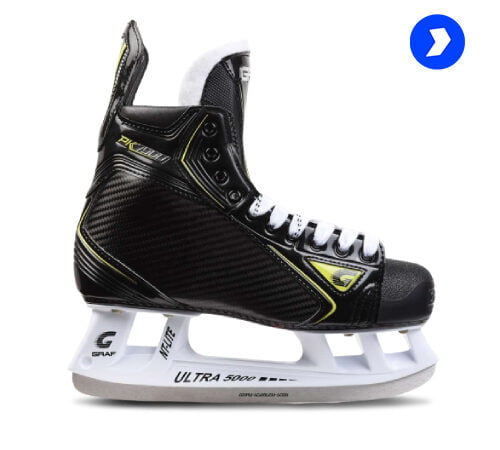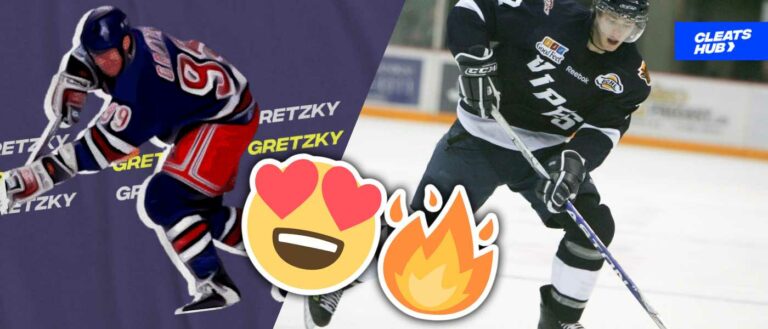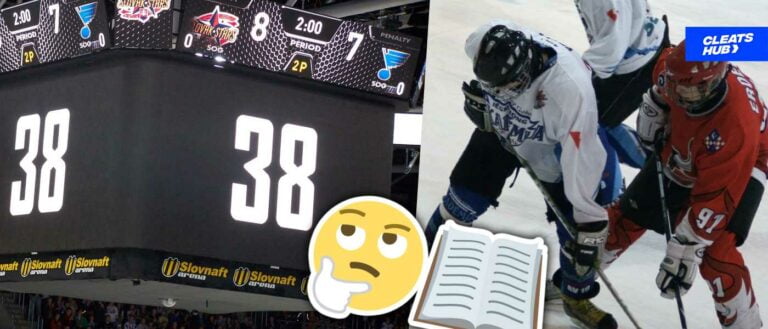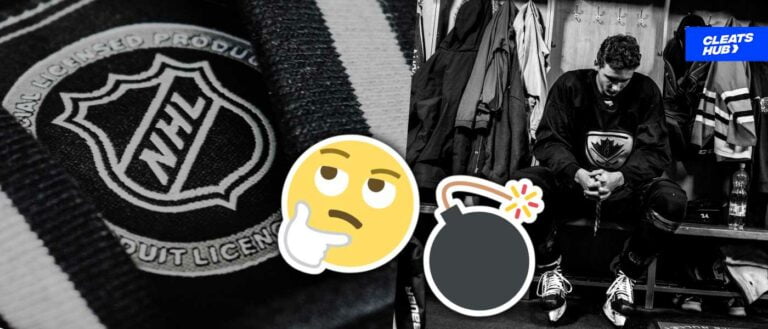How Do You Get A Penalty Shot In Hockey (NHL Penalty Shot)
As ice hockey lovers we all know what a penalty is in ice hockey. It is a term used to refer to the punishment for breaking one of the rules of the game by a player. Penalties are an integral part of ice hockey, but do you know what a penalty shot is?
When a team is awarded a penalty shot, the atmosphere in the arena tenses up. This is because, at that moment, an event that can change the outcome of the game lies in the penalty taker and the goalie only.
Before we go further into this topic, let us start from the basic.
What Is A Penalty Shot In Ice Hockey?
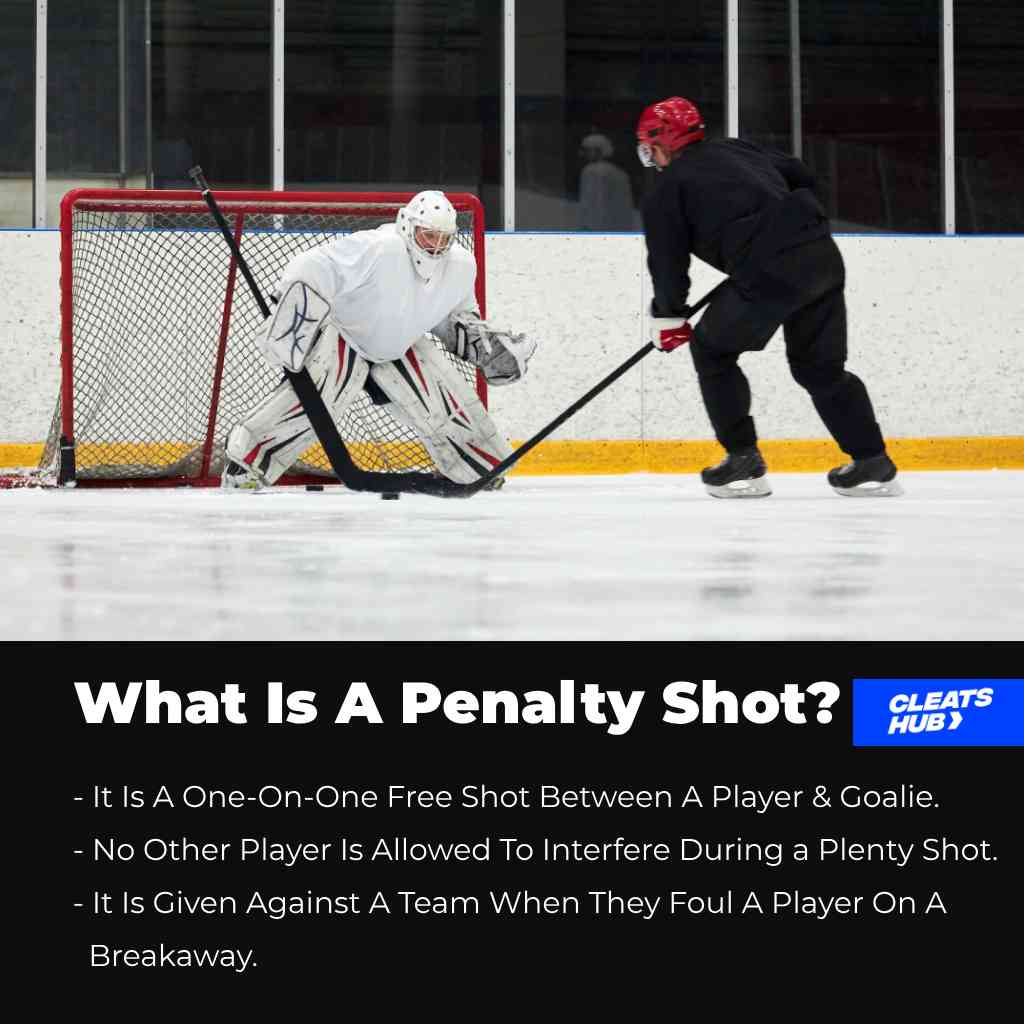
A penalty shot in ice hockey is an unimpeded one-on-one shot between a player (the player taking the shot) and the other team’s goaltender. In a penalty shot, the shooter picks up the puck from the center of the ice and skates all the way to the goaltender of the opposing team before releasing the ball.
Another name for it is a “free shot” since nobody else on the ice is permitted to interfere with it but the person taking the shot and the goalie. In ice hockey, a team will receive penalty shots if its players interfere with the other team’s opportunity to score.
Later in this essay, we’ll talk more about the offenses and justifications that result in the granting of penalty shots. Let’s take a quick look back at the NHL’s history of penalty shots first.
Who Was Awarded The First Penalty Shot In The NHL?
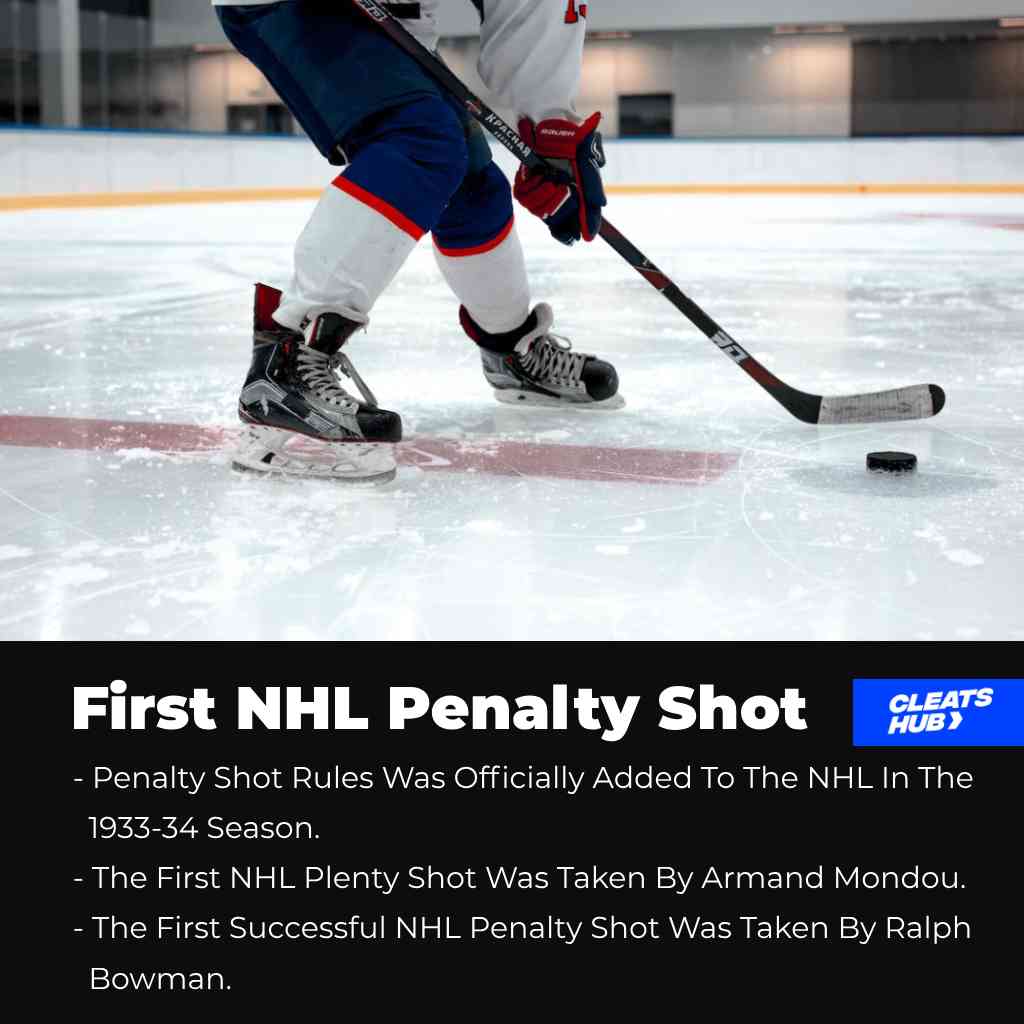
The NHL’s first ever penalty shot was taken during a match between the Montreal Canadiens and the St. Louis Eagles. Armand Mondou, a player for the Canadiens, received the shot.
In the same year that the NHL added the penalty shot rule to its rule book, the first penalty shot was issued. They had been a part of the Pacific Hockey League prior to this, which initially used them in the 1921–1922 campaign.
But it took the NHL roughly 13 years to ultimately accept this rule. The penalty shot rule was formally established to the NHL during the 1933–34 season, and Armand Mondou was given the first penalty on November 10.
Ralph “Scotty” Bowman also converted the first penalty shot goal three days after the first one was given out. He was a St. Louis Eagles player. Alec Connell, the Montreal Maroon’s goalie at the time, was the target of the shot.
Instances When A Penalty Shot Is Awarded In Ice Hockey
Whenever a player is prevented from a clear scoring opportunity while on a breakaway, a penalty shot is given to that player. However, the cause of the interception must be as a result of a misconduct by opposing team players.
It’s crucial to remember that penalty shots are only awarded when the player who was fouled is on a breakaway play while it happen. This is because when a player is stated to be on a breakaway, it signifies that the goaltender is the only obstacle between him and the goalnet.
Although this is the prerequisite, one of the following additional conditions must be satisfied in order for a penalty shot to be awarded:
- When the player who is on a breakaway is fouled by an opposing player from behind
- Whenever the net is deliberately moved by either the goalie or a player on the opposing team, in other to prevent the puck from going in
- In instances when a player of the opposing team, aside from the goalie, covers, falls, or picks up the puck in the goalie’s crease
- When a stick or any other material is thrown at the player on a breakaway and it hinders his scoring chance.
- Lastly, when a player on the bench of the opposing team leaves the bench to stop a player on a breakaway.
Hockey Penalty Shot Rules
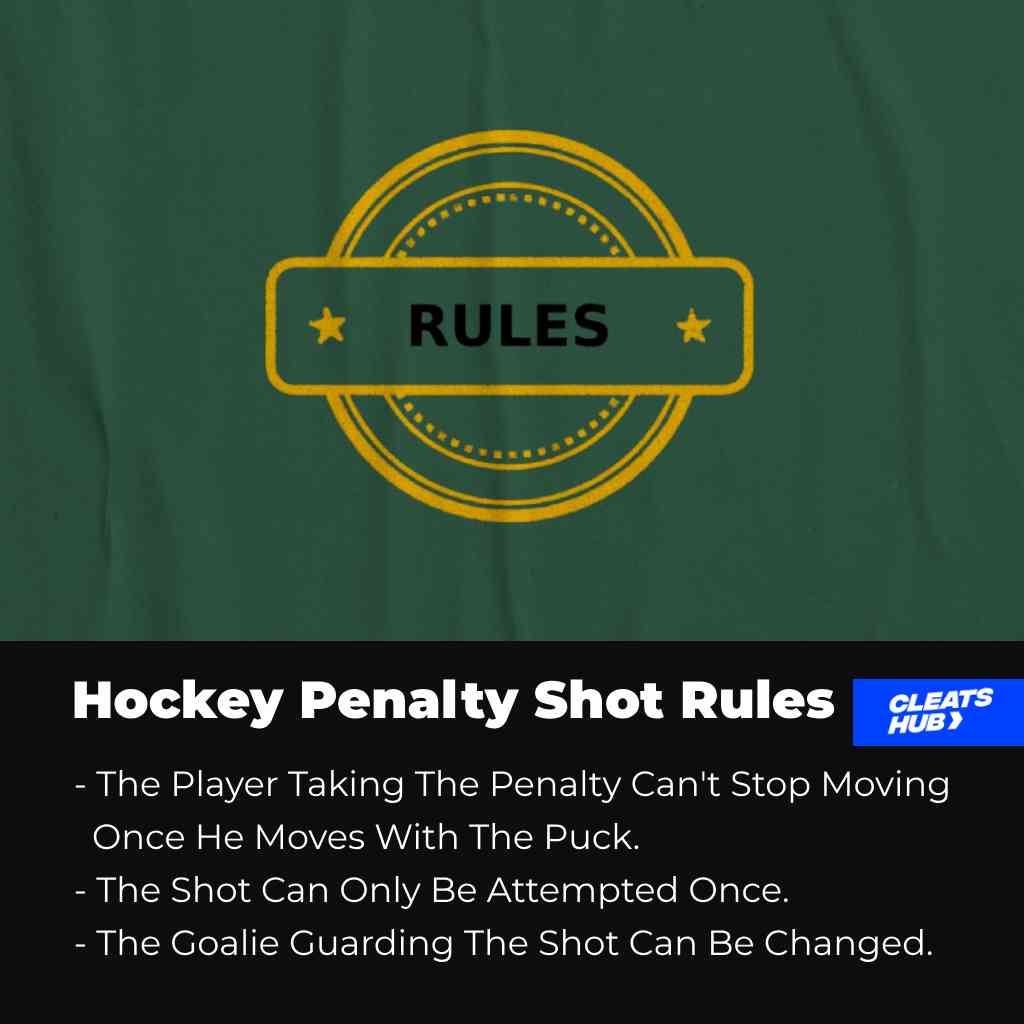
After a penalty shot is called in ice hockey for any of the instances called above, all the players on the ice move to their respective benches. After this, the puck is placed in the center of the ice and the player who is to take the shot moves with the puck towards the goalie.
However, there are a few rules to note about penalty shots in ice hockey.
First, the player taking the penalty shot is not allowed to stop moving while he is with the puck. He is not allowed to skate backward, perform a 360-degree spin (a spin-o-rama) or stop moving once he begins skating with the puck.
He is allowed to sway with the puck from side to side, but halting or performing a spin movement will lead to the cancellation of the penalty shot.
Secondly, the player making the penalty shot can only attempt a shot once. This means that once he fires the puck toward the net, the outcome of his first shot determines if it is successful or otherwise.
In addition, if the shot bounces off the goalie or goal net without entering the net, a player isn’t allowed to perform a rebound. If a rebound is made, it will not be counted as a goal. However, the only rebounds accepted are if the puck hits the net or goalie and enters the net on its own. But rebounds by a player are not allowed.
Thirdly, when defending the net, the goalie can only exit the goal crease after the player taking the penalty shot has taken the puck from the center of the rink. He is able to use any method to stop the puck but throwing objects such as his hockey stick at the player is not allowed.
When Can A Penalty Shot Be Retaken?
If an offense is committed by the goalie or any players on the goalie’s team while a penalty shot is being taken, if it interferes with the shot, it will be retaken. When the infraction is made, the referees do not stop the penalty shot but allow the player to complete it. If a goal is scored, it is not retaken, but if a goal is not scored, it will and the offending player is punished.
However, if the penalty shot is interrupted by a player on the same team as the player taking the penalty shot, or if he goes against the rules, the penalty shot will be nullified if a goal is scored. A way of interference is if the players of the opposing team try to distract the goalie. When did happen and a goal is scored, the goal is nullified and the offender is punished.
Here is a scenario to help you understand, if a player attempts a penalty shot and the goalie taking the penalty shot “dislodges the net” (or any other infraction) leading to an unsuccessful shot, it is taken again.
If during the second attempt, the goalie makes another infraction, the shot is taken again and the goalie is given a misconduct penalty. If it repeats itself the third time, the goalie gets a game misconduct penalty and is ejected from the game.
Another instance that can lead to the penalty being retaken is if the goalie leaves the crease before the player touches the puck.
Who Takes The Penalty Shot?
For deciding the player, a penalty shot is taken by the player who was on a breakaway when his scoring chance was impeded. However, there are about two exceptions to this rule.
The first is if the player is injured. If the player to take the shot has an injury that restricts him from taking the shot, another player from the team can be called upon.
Another reason is if reason for the penalty shot was because the opposing team (defensemen) handled the puck with his hands in the goalie crease. In instances like this, any player can take the penalty shot.
However, when it comes to the goalie who is to guide the net for a penalty shot, a team can decide to change the goalie before the penalty shot. But this comes on a condition. If the goalie is changed, the new goalie will not be replaced until there is another stoppage in play.
Strategy For Taking Successful Penalty Shots
One of the most successful tactics for winning a penalty shot is not how much you can confuse the goalie with stickhandling moves, but rather how much you can sell a fake shot to the goalie.
Selling a shot requires the use of your entire body movement because this is what goalies look for when they read players. Moreover, the more effective you are at convincing a goalie with your body language that you are going to shoot in a certain position, the more you will be able to perform successful penalty shots.
Also, while moving with the puck ensure that your stick is always open. This gives the impression that you are about to shoot. But when your stick is closed on the puck, the goalie will be able to identify when you are about to shoot and when you are faking.
Penalty Shots In The NHL
Of the several games played in an NHL season, penalty shots do not occur that often. The number of penalty shots in the NHL may differ from year to year, however, the percentage of successful shots is within a certain range.
What Is The Success Rate Of Penalty Shot In The NHL?
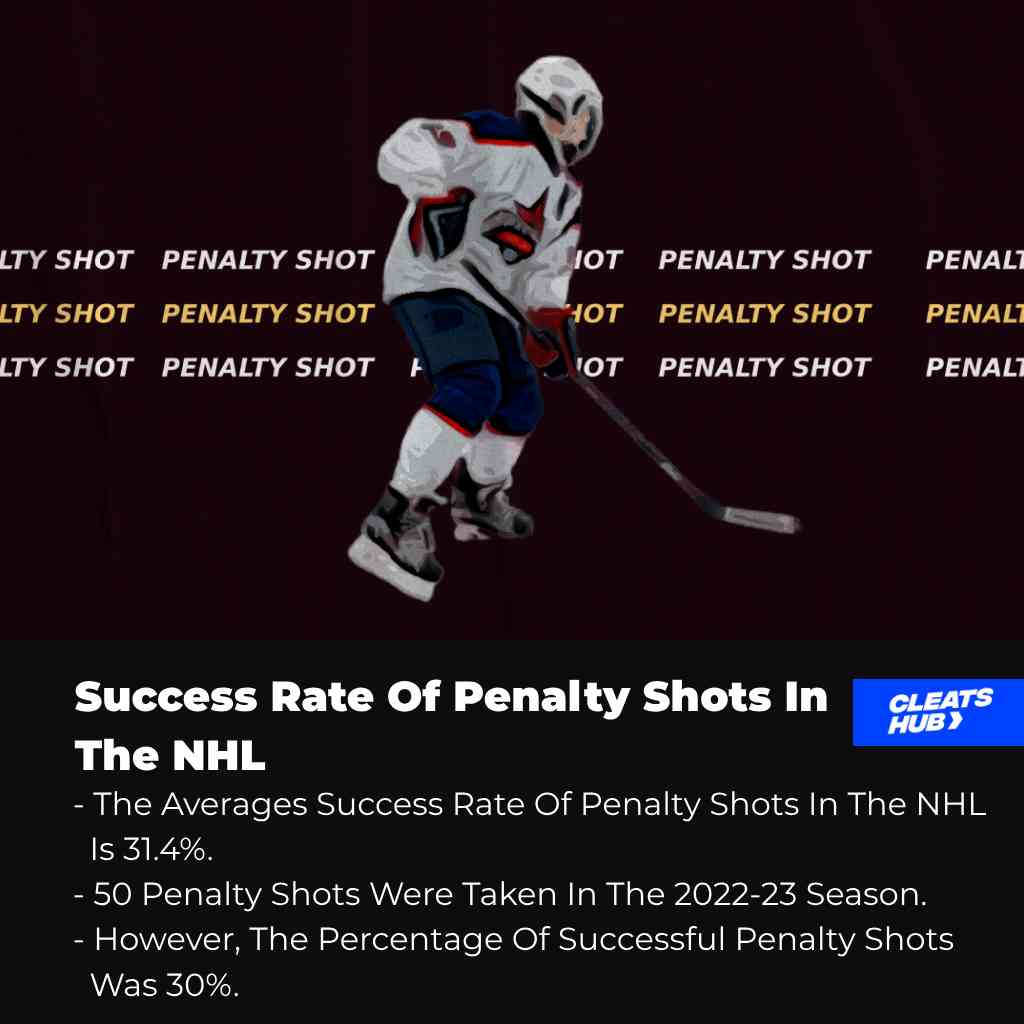
The average success rate of penalty shots in the NHL from the data of ten consecutive NHL seasons is 31.4%. This means that less than half of the penalty shots taken in the NHL are saved by the goalie.
In simpler terms, it also means that in every three penalty shots taken in the NHL, there is a possibility that only one will result in a goal. Also, for the 2022-23 season, 50 penalty shots were taken in the NHL of which only 15 of these shots conceded as goals.
Therefore, that brings the percentage of successful penalty shots for the 2022-23 NHL season to exactly 30%.
| NHL Season | No. Of Penalty Shot | No. Of Successful Penalty Shots | Percentage Of Successful Penalty Shots |
| 2022-23 | 50 | 15 | 30% |
| 2021-22 | 34 | 8 | 23.5% |
| 2020-21 | 27 | 9 | 33.3% |
| 2019-20 | 46 | 11 | 23.9% |
| 2018-19 | 43 | 15 | 34.9% |
| 2017-18 | 49 | 19 | 38.8% |
| 2016-17 | 44 | 14 | 31.8% |
| 2015-16 | 57 | 17 | 29.8% |
| 2014-15 | 37 | 14 | 37.8% |
| 2013-14 | 69 | 21 | 30.4% |
| Total | 456 | 143 | 31.4% |
Which NHL Player Has The Most Penalty Shot In His Career?
The player in the NHL who has taken the most amount of penalty shots in the NHL is Vincent Lecavalier. The player for the Lightnings, Flyers, and Kings has made 13 penalty shots in his career.
In addition, closely next to him at number two is Alexender Ovechkin. Ovechkin currently has 12 penalty shots in his career. However, it is very possible for Ovechkin to pass the record of Vincent Lecavalier.
| Ranking | Player | No. Of Penalty Shots |
| 1 | Vincent Lecavalier | 13 |
| 2 | Alex Ovechkin | 12 |
| 3 | Rick Nash | 11 |
| 4 | Pavel Bure | 11 |
| 5 | Marian Gaborik | 10 |
| 6 | Marian Hossa | 10 |
| 7 | Evander Kane | 9 |
| 8 | Brad Marchand | 9 |
| 9 | Jarome Iginla | 9 |
What Is The Difference Between Penalty Shots And Shootouts?

It is important to know that there is a difference between penalty shots and shootouts in ice hockey.
As you know by now, a penalty shot is the result of an infraction made to a team due to the obstruction of a player who was on a breakout. Aside from the fact that it is the punishment given for a penalty, it can occur during regulation time or overtime.
In addition, when a player scores, it is added to the total score count of the team.
However, when we move to shootouts, they are not punishments for offenses in ice hockey. Rather, they are used as a final tie-breaker after the end of a match that does not end during overtime.
Also, shootouts are taken in sets of threes. This means that three shots are taken by each team one after the other, and the team with the most goals is the winner. But if these teams remain drawn, another set of three shootouts is taken again.
Conclusion
After a penalty shot, the game continues with a faceoff. However, the location of the faceoff depends on the outcome of the penalty shot.
Also, if the penalty shot leads to a goal, the faceoff will begin at the center of the ice rink. But when the opposite happens, the position where the faceoff will take place is where the initial infraction was committed.
Finally, thank you for reading.
Psstt…. The Top Performing Cleats
